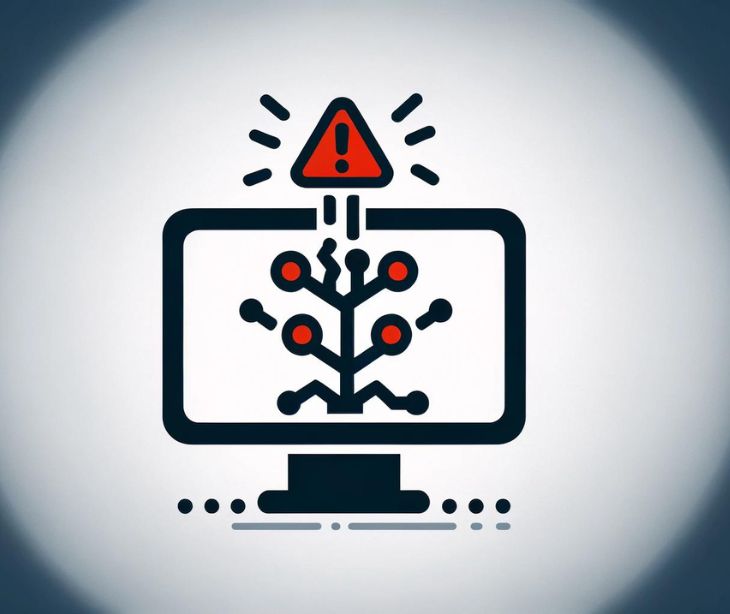
Website defacement is the unauthorized modification of a website's content or files. Attackers change the website's appearance to embarrass the owner or raise awareness about their cause. Unlike other cybersecurity threats, website defacement attacks are primarily driven by the desire to make a statement rather than to gain personal benefits.
Motivations behind website defacement
Attackers deface websites for various reasons. Some do it for the thrill or to enhance their online credibility. In other cases, disgruntled website administrators may seek revenge on companies that have failed to compensate them. Additionally, activists may deface websites to disagree with an organization's actions or policies.
Notably, in 2020, hackers defaced former president Trump's personal website as a form of political protest. Regardless of the motive, the common goal is to attract attention and create awareness quickly.
Consequences of website defacement
The effects of a defaced website can be detrimental to a business. The most significant impact is the loss of customer trust. Clients expect companies to prioritize quality and security; a defaced website signals a breach of that trust.
Regardless of the complexity of the security vulnerability exploited, customers perceive the incident as a failure on the company's part. Restoring customer trust is challenging and time-consuming, requiring a thorough security audit and substantial financial investment.
Understanding the website defacement process
Understanding how attackers gain unauthorized access to websites is necessary in preventing defacement. Although the methods used by hackers may differ based on the web server and content management system, the general process involves exploiting security vulnerabilities. Common vulnerabilities include broken authentication, SQL injection, and misconfigured server security. Once the attackers use these flaws, they gain access to the system and try to acquire administrative privileges. With administrative access, they can easily modify the website's content and appearance.
Preventive measures against website defacement
Guarding against the threat of website defacement requires a proactive stance. These steps include:
Defense-in-depth approach
Adopting a defense-in-depth strategy involves implementing multiple layers of security measures. This includes the deployment of firewalls, intrusion detection systems, and web application firewalls to create a defense system.
Vulnerability elimination
Security audits are necessary for identifying and addressing web vulnerabilities. Timely patching of software, plugins, and frameworks further mitigates potential entry points for attackers.
Database and source code security
Strengthening database security through audits and access control updates prevents unauthorized access to sensitive data. Secure source code repositories with access controls to prevent unauthorized modifications, especially by former employees.
Employee training and incident response plan
Educate employees on security best practices to reduce the risk of insider threats. Develop and maintain a comprehensive incident response plan. Conduct regular drills to ensure the team is well-prepared to respond effectively.
Detecting and responding to website defacement
Employing website defacement monitoring tools allows businesses to detect unauthorized website changes promptly. Configure monitoring tools to provide real-time alerts upon detecting suspicious activities.
Swift response and reputation management
Establish a rapid response team capable of immediate action upon detecting a defacement. Define clear escalation procedures to ensure the right personnel are involved in the response process. Have a reputation management plan to address potential fallout, communicating transparently with stakeholders and the public.
Forensic analysis
Conduct forensic analysis after a defacement incident to understand the extent of the compromise. Use the findings to improve security measures and prevent future occurrences.
In the news
The Hawaiʻi State Department of Health (DOH) recently resolved a website defacement incident caused by the Ransomed cybercrime group, which claimed to have stolen data from healthybydefault.hawaii.gov. This site, created to comply with a 2020 state law mandating healthy beverages as the default in children's meals, was replaced with a note from the hackers on August 31.
A DOH spokesperson confirmed that the defaced site was in pre-launch status with only test data and assured that no other government systems or protected health information were impacted. The website, created for restaurant certification, has been restored to a static version with limited functionality while the investigation continues. This incident is part of a broader trend of cyber attacks targeting Hawaiʻi, including recent assaults on the state’s community college and a national astronomy center.
FAQs
What is website defacement and how does it relate to healthcare security?
Website defacement is a cyberattack where hackers alter the visual appearance or content of a website without authorization. In healthcare, defacement can involve changing text, images, or inserting malicious content, compromising the trust and credibility of the organization.
Why is website defacement a concern for HIPAA compliance in healthcare settings?
Website defacement is a concern for HIPAA compliance because it can lead to unauthorized access to sensitive information, disrupt communication channels, and damage the reputation of healthcare organizations. Additionally, it can undermine patient trust and potentially expose protected health information (PHI) if attackers gain deeper access through the defaced site.
What are the potential risks associated with website defacement incidents under HIPAA?
Website defacement incidents can result in breaches of patient confidentiality, unauthorized exposure of PHI, and disruptions to online services that patients and providers rely on. Such incidents can lead to HIPAA violations, legal consequences, financial penalties, and reputational damage to the healthcare organization.
Subscribe to Paubox Weekly
Every Friday we'll bring you the most important news from Paubox. Our aim is to make you smarter, faster.




